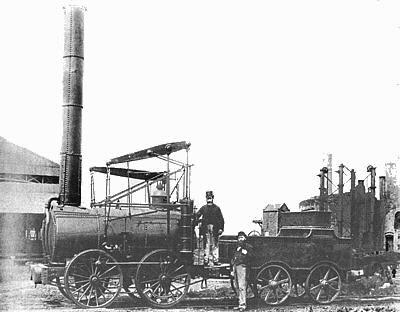During the dawn of the industrial revolution
the Black Country began to take form. Richard Foley's iron empire
had by 1636 grown to include five furnaces, nine forges and slitting
mills. In 1665 Andrew Yarranton claimed to have made the River
Stour navigable from Stourport to Stourbridge, and in the same
year 'Dud' Dudley mentioned his father's Iron works in Pensnett
Chase in his treatise 'Metallum Martis'.
Agricultural reform was at the same time
amalgamating strips of land into more viable fields and there
was a growing movement away from agriculture into industry. The
villages of Kingswinford, Wordsley, Bromley and Shut End were
well established by the time the first Enclosure Act for their
area was passed in 1776. To the west squatter villages, at Cradeley
Heath, Brierley Hill and Mushroom Green, were becoming established
on outcrops of shallow coal and small forges were set up to work
iron.
|
|
The Staffordshire and Worcestershire canal
opened in 1772 passing to the west of the Black Country, a few miles
from the edge of Pensnett Chase. The Stourbridge Canal opened in
1779 and ran to Stourbridge with branches to the Delph, below Brierley
Hill, and to the Fens of Pensnett Chase, but it was not until 1840
that the Stourbridge Extension Canal penetrated further into the
Chase. The Dudley Canal and the Dudley Tunnel opened up more of
the area in the 1790's providing new routes into Birmingham and
the rest of the Midlands.
Once the Black Country canal network began
to be created it was only natural for industry to wane at Coal-brookdale
and take root in the Black Country where mineral resources were
more abundant, more easily worked, and a transport infrastructure
was beginning to reflect the needs of industry.
|
|
The Kingswinford Enclosure Act of 1786 included
specific mention of the Lord of the Manor's mineral rights in the
area, and of railways. Many tramroads sprang up linking collieries
to the canals and to the new iron works being opened, but large
areas of the Chase were still unconnected to the outside world.
In 1827 James Foster of' John Bradley &
Co', the Iron-masters from Stourbridge, and Lord Dudley, (The Fourth
Viscount Dudley & Ward) agreed to build a railway from Ashwood
Basin, on the Staffs & Worcs Canal, to Shut End on Pensnett
Chase. Unlike the earlier tramroads the line was of standard gauge
and much of it steam drawn. A new canal basin was built at Ashwood
for the railway, with facilities for outgoing coal.
|
In 1829 on the 2nd of June the line opened,
large crowds saw "AGENORIA" haul eight carriages
with 364 passengers and fourcarriages with three and half tons
of coal along the two mile level stretch. On the second run
even more coal wagons were added, but on the third run with
only a few passengers a speed of eleven miles per hour was obtained.
The "AGENORIA" was designed
by the line's engineer, John Rastrick, and built by 'Rastrick
and Foster' in Stourbridge. Their second locomotive, the Stourbridge
Lion, became the first locomotive to run on rails in the United
States on the 8th of August 1829. The 'Agenoria' remained isolated
from the main rail network until 1865 when the Kingswinford
Railway and the Pensnett Railway were linked together, and to
the Oxford, Worcester and Wolverhampton Railway. Now in York
Railway Museum "AGENORIA" is the oldest preserved
railway locomotive in the world.
The "AGENORIA"was named after
the goddess of courage and industry.
This body of work is about the landscape
through which the Agenoria once ran, a landscape constantly
evolving and changing which never the less still bears many
scars from its previous uses. It is a history of land usage
and the way that reflects on the current topography of the region.
|

![]()
